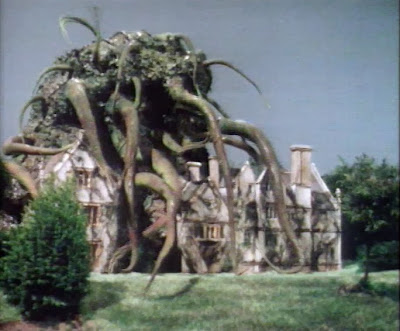"Now drop your weapons or I'll kill him with this deadly jelly baby."
Episode 89: The Face of Evil.
Companions: 4th Doctor and Leela.
Air Date: Four episodes. 1st to 22nd January 1977.
The TARDIS arrives on a planet where a savage tribe called the Sevateem worship a god called Xoanon. The Doctor discovers that Xoanon is in fact a spaceship computer that he tried to repair at some point in his past and inadvertently drove mad by giving it a multiple personality.
The Face of Evil is another classic science fiction trope. In this case it is a deranged computer with multiple personalities caused by the fourth Doctor in a previously untelevised story. I'm guessing there is a big gap of adventures following the Doctor departing Gallifrey in the previous story as I can't see when he could have done it otherwise. Although the insane computer backstory is central to the adventure, it also deals with the power struggle in the Sevateem tribe and their struggle against the Tesh who serve the computer. All in all, not a bad little story.
The Doctor is joined by a new companion, Leela, a primitive female warrior of the Sevateem played by Louise Jameson. I like Leela quite a lot. She is another strong female companion but with the right amount of vulnerability to be believable. Unlike Sarah Jane Smith, Leela remains a strong figure throughout her tenure on the show. I think she was included, skimpy outfit and all, to keep the dad's watching after the Saturday afternoon football.
Leela is quite a violent character for an afternoon tea time family show. She kills two members of her own tribe very early on in the story. It is kind of nice to have such a character as normally the Doctor and companion are so nice - not counting the amount of Venusian Akido that the third Doctor used to do. It's just a very different approach.
As I said earlier, this isn't a bad story but at the same time it is missing a little something to give it that push towards a good story. It floats along at a nice pace with some good character interaction and humour but I am sure there is something that could have made it a better story.






















